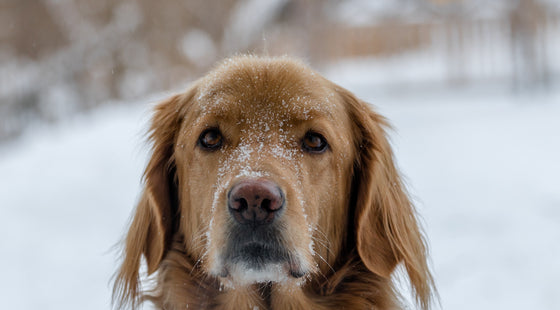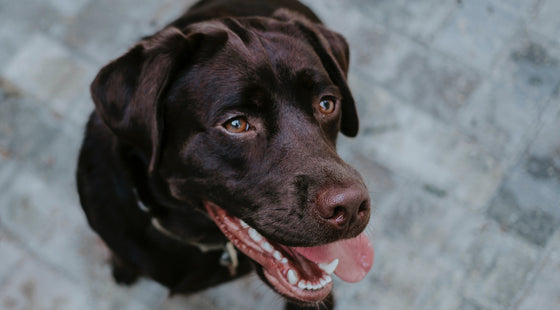

How to bike ride with your dog
As a dog owner, you may have realised that your best fur buddy has a lot of energy. Pups love to run, which is why bike riding with a dog can be a great way to burn off your fur friend's energy while saving some of yours. However, this is not an activity for all dogs!
The seemingly endless energy reserves that dogs have cannot always be satisfied with a simple walk. This is why activities like the dog park or a bike ride can up the ante, working to curb their exuberance. For those whose legs are tired from too many walks, cycling with your dog can be a fun solution, it can be relatively low impact on you and gives your active dog the faster and longer run they desire.
Lots of people safely and successfully cycle with their dogs, and there are some helpful training tips and devices available so you can join this group. Read on to learn how to take a dog on a bike ride and add a new doggy activity to your repertoire.
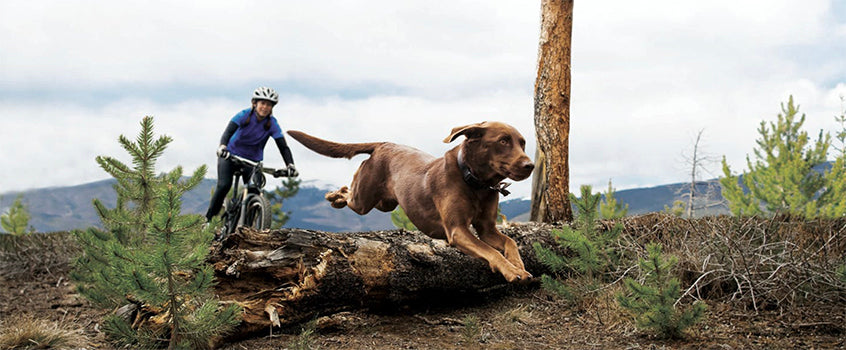
The benefits of biking with your dog
Teaching your dog to run with a bike has some advantages over simply walking them, including:
• It is much easier to wear an active dog out in a much smaller amount of time
• Your dog is still safely secured to you but able to run in an active environment
• Destructive dogs can be calmer if they get the right amount of exercise
• It’s a fun activity that ticks the fitness box for both of you
Is biking suitable for all dogs?
While biking with a dog can be extremely enjoyable, you must take the right precautions and remember that the activity is not suitable for all breeds. Biking is often an activity for dogs that are at least 11kgs and have finished growing. This is best suited for medium to large dogs with a few exceptions for energetic smaller ones.
The key is ensuring you ride at your dog’s pace instead of trying to set the pace for them.It is vital that you never pull your dog along. Distances should also be limited until you train your dog to run with your bike correctly.
A good rule of thumb is; the smaller the dog, the slower the pace and shorter the distance. Understanding your dog’s obedience, capabilities, and physical condition before you begin is vital, and you can speak with your vet or a professional dog trainer to confirm these things.
Flat-face breeds (brachycephalic) such as Bulldogs and Pugs are not great for distance running as they overheat quickly. Dogs with long bodies or short legs can find biking difficult, while puppies should not have intense exercise. Biking with your dog comes down to common sense in most cases, and the goal should always be to build their stamina slowly, ensuring that you never push your dog beyond their capabilities.

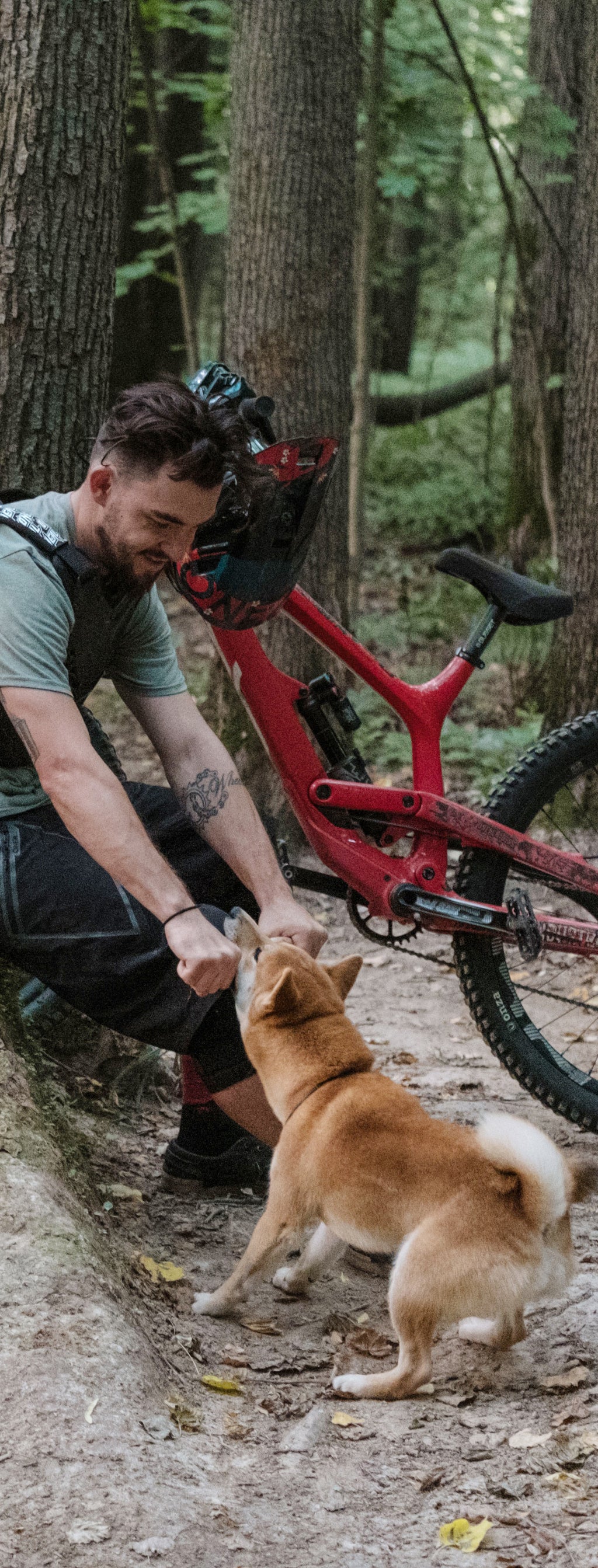
Tips for how to bike with dogs safely
There is a right and wrong way to approach biking with your dog. Here are our primary tips to consider to ensure you train your pup to enjoy this activity in a safe way.
TIP #1: MAKE SURE YOUR DOG IS UP FOR IT
Some dogs will simply not be excited about the prospect of bike riding. No one knows your dog better than you. Dogs who are overweight or have health issues should also not be taken on high-intensity runs.
If your dog is beginning to show signs of ageing they may not be suited to biking as it may be strenuous on their joints, especially if they are already showing signs of arthritis. Also, be aware if your dog has a thick, heavy coat, as the heightened level of running may be uncomfortable.
If you have a dog that is obsessed with running or fast walks, then you have a great candidate for biking! Always check with your vet before starting any new exercise regimen to be on the safe side.
TIP #2: TEACH YOUR DOG TO WALK NICELY NEXT TO YOU FIRST
Just as we need to crawl before we walk, dogs need to walk before they run! It is vital that your dog can walk with you calmly and without distraction before adding a bicycle into the mix. Use positive reinforcement methods to teach your dog to focus and walk on a loose leash beside you. Safety cues are also important, so it's best to teach them to respond to commands like ‘watch me,’ ‘stop,’ and ‘slow.’ These instructions and your dog's response to them will be vital when things are at a faster pace on a ride.
TIP #3: GET YOUR DOG USED TO THE BICYCLE
Before you head out for a ride with your dog, make sure they are comfortable with your bike. Remember, this will be an extremely strange contraption in your dog's eyes, and it will be even weirder when it takes off with pace with mum or dad stuck on top of it.
Some dogs will show their discomfort even being near a bicycle. If your dog seems afraid of the bike or the noises it makes, start by getting them comfortable with it while stationary. Put your dog next to the bike and let them get used to the sounds and movements before heading out on a ride together. Treats and positive reinforcement can help your dog learn that the bike means good things. This may take a few days or weeks as you build up your dog's confidence around the bike, and some dogs may never learn to be relaxed with your bicycle. However, this is a crucial step as it will be near impossible to train your dog to go on bike rides correctly without mastering this first.
TIP #4: START SLOW
We mean this both literally and figuratively. No matter how energetic your dog may seem, they will still need to build stamina to keep up with the bike. Your dog's muscles and paw pads are not used to this kind of exercise and running as biking is different to running and playing in the dog park or yard. We recommend starting with 5-10 minute sessions during the first week of rides and increasing the time from there. It is important to keep in mind that running on hard surfaces can be dangerous, so a conditioning process is required. Eventually, you can build to longer rides over time.
TIP #5. ALWAYS KEEP A CLOSE EYE ON YOUR DOG WHILE RIDING
Starting slow is about both your and your dog's safety. You need to monitor their health along the ride while also watching where you are going. Keep in mind that dogs do not have the same stamina as we do, so it's important to avoid hot weather and long rides. Remember, you are on wheels, so the trek is much easier!
When you go for a ride with your dog, always keep in mind that this is not a bike ride for you, so avoid long distances, rough trails, or excessive heat to keep your dog safe. Keep it slow and easy by your normal riding standards the entire time and allow for plenty of breaks. Always check in with your dog and ensure they are enjoying themselves, and aren't too tired.
Important considerations before biking with your dog
You can find a range of products that are specifically designed to help you bike with your dog. These can include:
• Running harnesses
• Bungee leashes
• Bike attachments that prevent the leash from catching in the wheels. We do not recommend simply holding the leash in your hand while riding. This can be less secure or cause trouble should your dog randomly pull in a different direction to the one you should be heading in. Instead, a special bike attachment can absorb the shock of this pull via a heavy-duty spring that attaches to the seat post and a harness on your dog.
The enjoyment of cycling with your dog
As mentioned, not all furry companions will have the desire or ability to bike with their humans. When you consider all of the factors listed above, including age and breed, this may only be a viable activity in select circumstances. Patience is key, and it may take up to 10-14 months before your dog's soft bones are formed and capable of intense running.
Another option for small, old or or those who suffer from mobility issues is a carrier! These baskets hook onto so your best bud can sit comfortably on your bike, and you can both enjoy riding together. This is another activity that requires a slow build to ensure your dog is comfortable with and on your bike. Whichever riding option you choose, the key is always safety first for you and your dog. Did somebody say matching helmets? Cute.
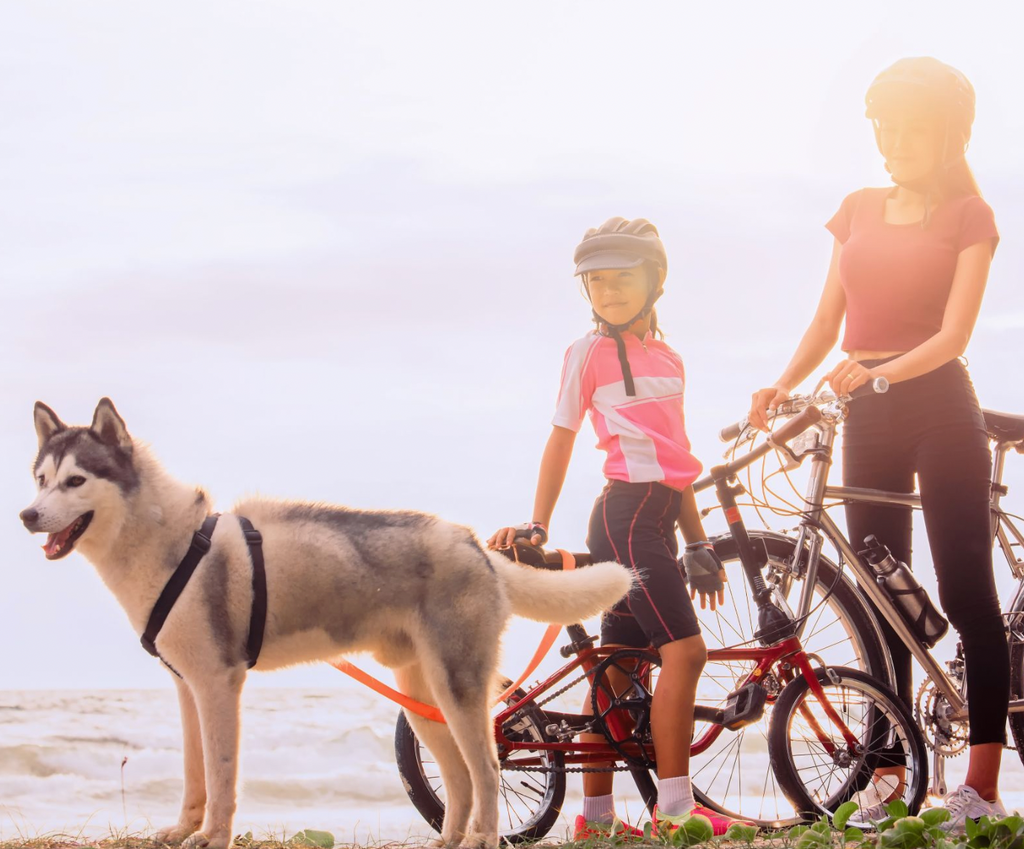
AN ACTIVE DOG REQUIRES ACTIVE FOOD
If you are considering bike riding with your pup, you likely have a very active dog. As a result, they'll need a diet that can support this high level of physical living and the Eukanuba Active product range is nutritionally optimised to do exactly that. Find the best option for your best friend.

Our Vet's trending questions, answered
Once your order leaves our warehouse and is scanned into the New Zealand Couriers network you will be sent track and trace details via email. You can use these track and trace details to keep an eye on your order, and when it will be delivered.
Payment is required when you place your order, you can checkout with your credit card, via online banking or in instalments with Afterpay or ZIP. Note: Your order confirmation is your tax invoice, as we endeavour to become more environmentally friendly, we no longer print and include copies of tax invoices with orders
Qualifying purchases made on auto re-order qualify for our loyalty programme. Almost all our premium vet diets, and vet recommended flea and worm treatments are included in the loyalty programme.




